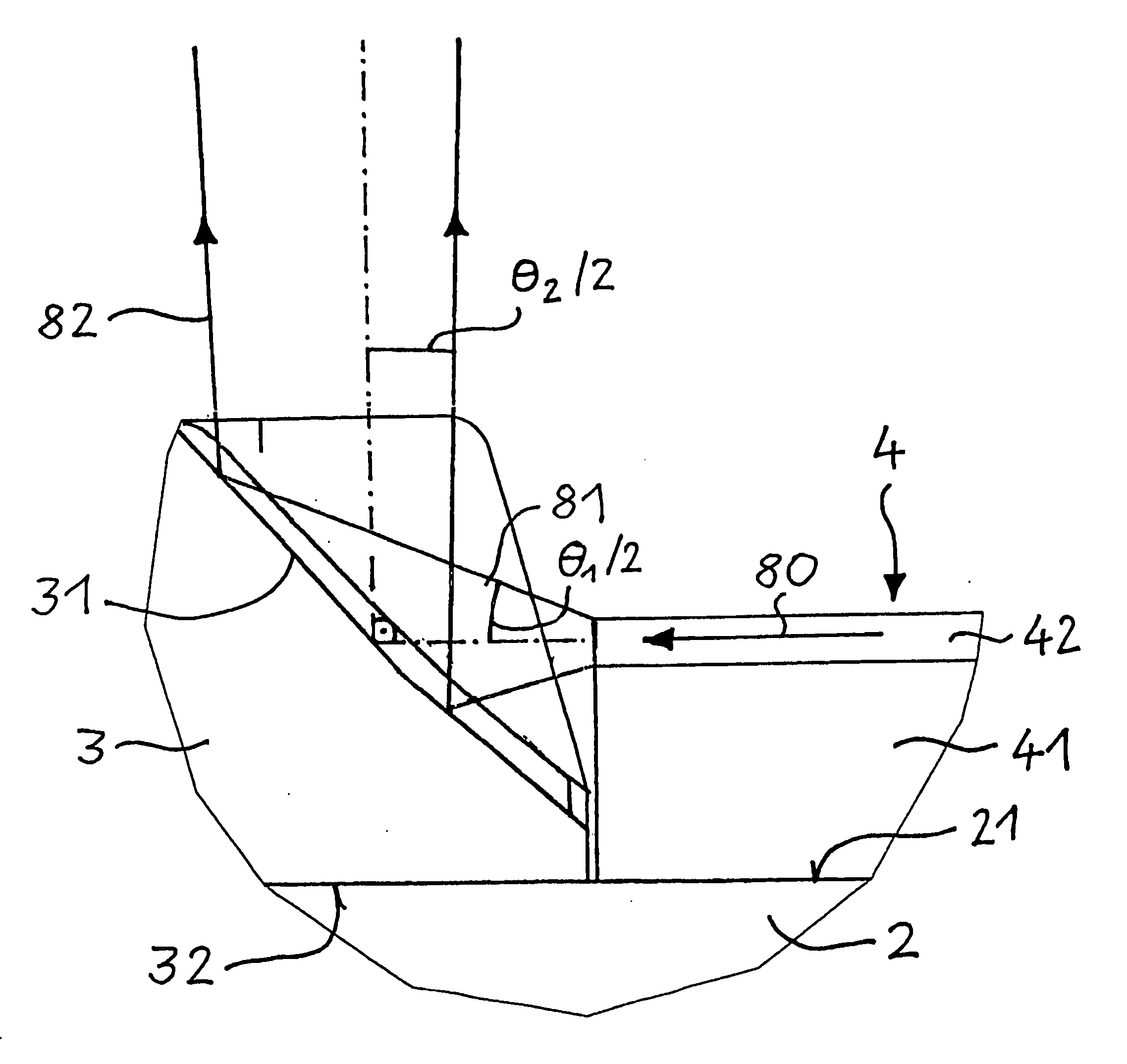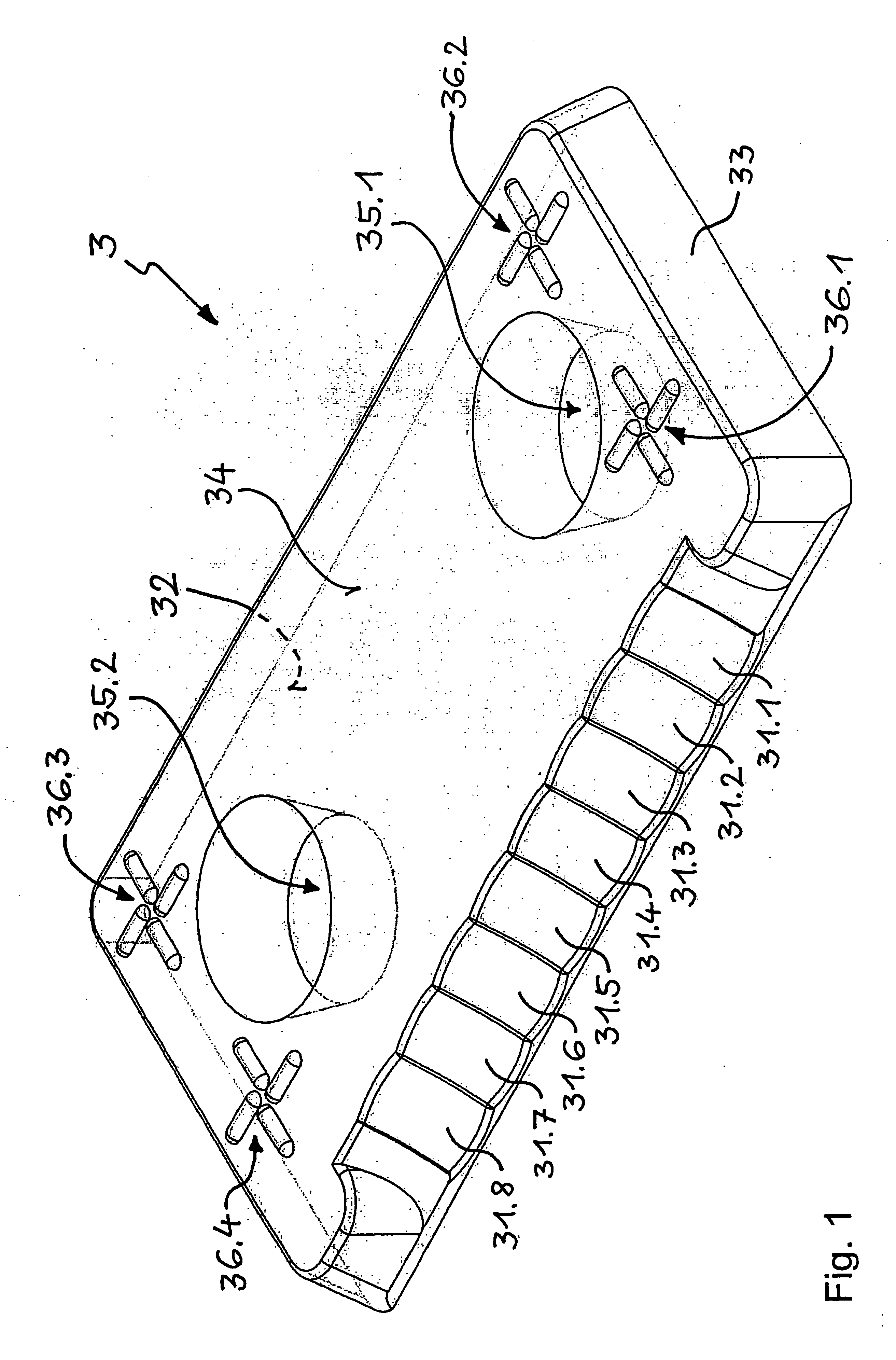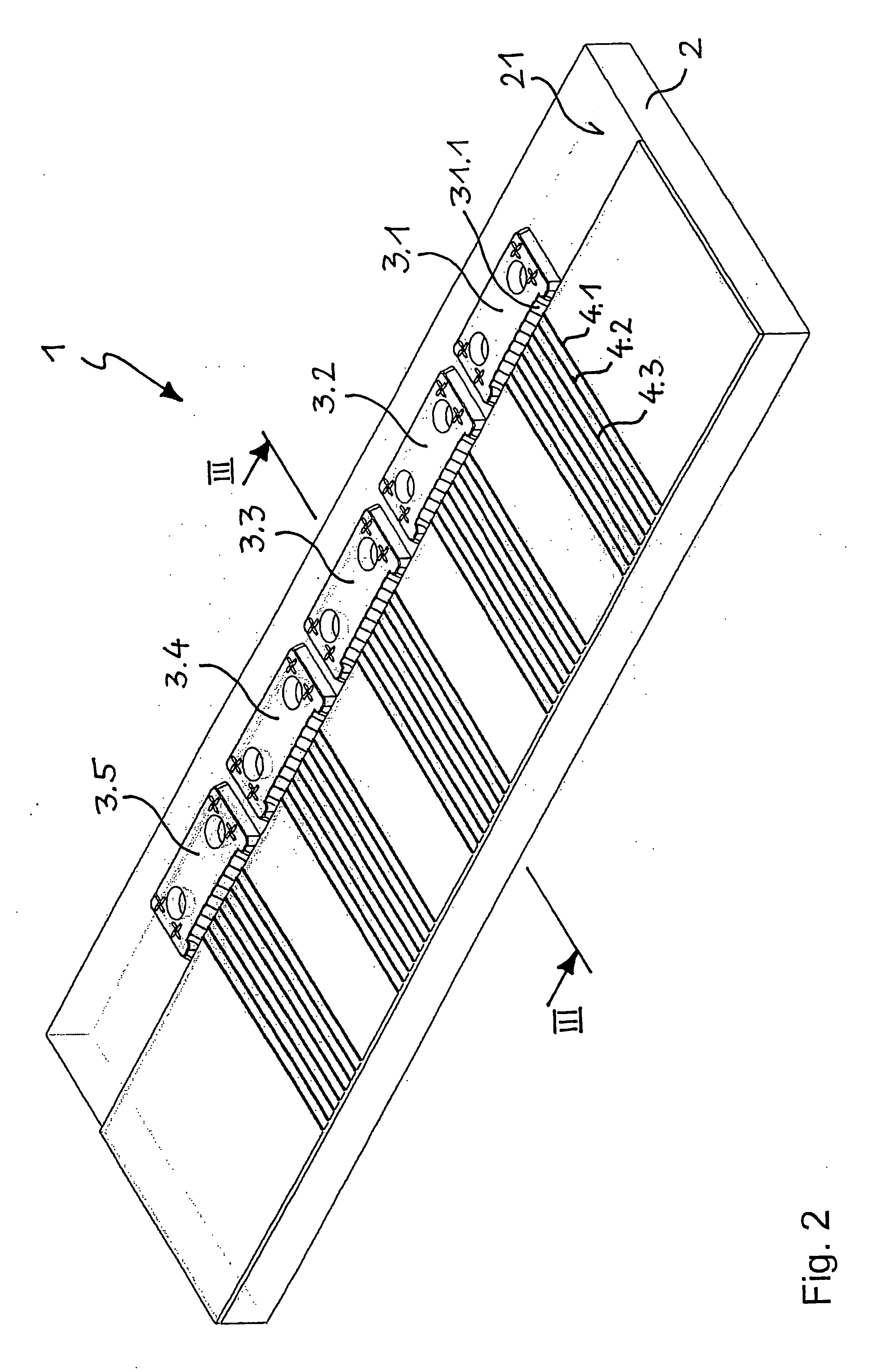Optical coupler
a technology of optical couplers and couplers, applied in the field of optical couplers, can solve the problems of many waveguides manufactured, reduced coupling efficiency, light loss, etc., and achieve the effect of mass production, optimized coupling efficiency, and reduced light damping in the componen
- Summary
- Abstract
- Description
- Claims
- Application Information
AI Technical Summary
Benefits of technology
Problems solved by technology
Method used
Image
Examples
Embodiment Construction
[0038]FIG. 1 shows a preferred embodiment of a coupling element 3 for the application in an optical component according to the invention. Thereby, it is the case of an autonomous element which may be manufactured inexpensively in large quantities. It may be manufactured for example by way of molding from a plastic capable of being injection molded, such as polycarbonate (PC), polymethylmethacrylate (PMMA) or polyetheretherketone (PEEK). Standardized components may be produced with this method in large batch numbers and with strict tolerances and at low costs. One may apply methods such as micro-embossing or micro-injection-molding, in order to manufacture structures with dimension of a few 100 μm.
[0039] The basic shape of the coupling element 3 may for example be a truncated pyramid with a rectangular base surface 32, wherein the base surface 32 may measure approx. 6 mm×3 mm and the height may amount to approx. 0.5 mm. In the embodiment example of FIG. 1, the coupling element 3 is ...
PUM
 Login to View More
Login to View More Abstract
Description
Claims
Application Information
 Login to View More
Login to View More - R&D
- Intellectual Property
- Life Sciences
- Materials
- Tech Scout
- Unparalleled Data Quality
- Higher Quality Content
- 60% Fewer Hallucinations
Browse by: Latest US Patents, China's latest patents, Technical Efficacy Thesaurus, Application Domain, Technology Topic, Popular Technical Reports.
© 2025 PatSnap. All rights reserved.Legal|Privacy policy|Modern Slavery Act Transparency Statement|Sitemap|About US| Contact US: help@patsnap.com



